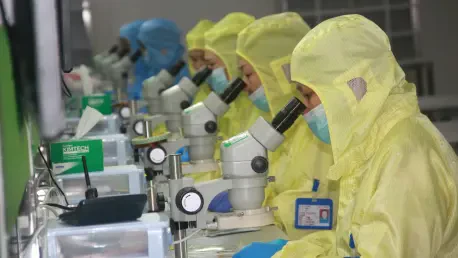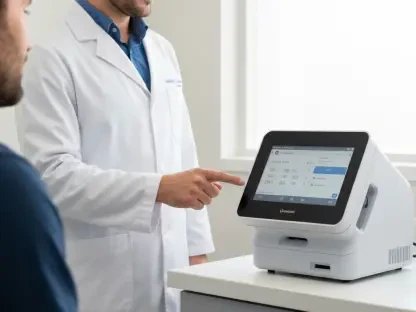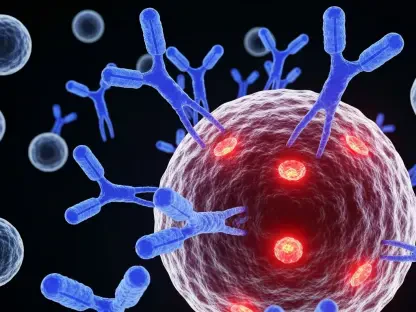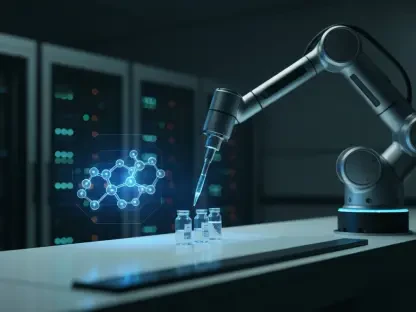In the pharmaceutical landscape, Novartis has emerged as a trailblazer with its continuous manufacturing efforts, particularly through its BioFuture site in Schaftenau, Austria. This strategic initiative, highlighted at the BioProcess International Europe event by senior process expert Katharina Bauer, underscores a paradigm shift toward optimized medicine production. Novartis focuses on accelerating drug delivery by harnessing a standardized, single-scale process—a method designed to eliminate redundancies, mitigate risk, and reduce costs. Central to this evolution is enhancing efficiency through minimized material requirements, embracing automation, and adopting digitalization. These advancements pave the way for reduced human intervention, thereby decreasing potential errors. Mobile and modular equipment affords Novartis the flexibility to adapt processes across its vast product portfolio, emphasizing the company’s commitment to innovation. By pushing the boundaries of conventional manufacturing methods, Novartis sets a new benchmark in pharmaceutical production, marking a pivotal moment in industry transformation.
Streamlining Operations for Efficiency and Flexibility
Continuous manufacturing has cultivated significant progress for Novartis, fundamentally transforming its pharmaceutical processes. Since the initial endorsement of this program, substantial strides have been made, with the establishment of the Schaftenau facility proving pivotal. In less than three years, the facility achieved Good Manufacturing Practice (GMP) process validation, a challenging benchmark that signifies adherence to stringent international standards. The goal was to secure FDA approval shortly after, cementing the company’s reputation for pioneering safe and effective production strategies. Employing Process Analytical Technology (PAT) stands central in this transformation. PAT fosters automation and real-time quality assurance, optimizing both upstream and downstream processes. Novartis endeavors to boost protein production and refine resin technology, ensuring higher yield and better product quality. This systemic approach, marked by strategic enhancements, distinguishes Novartis’s manufacturing operations from traditional practices, aligning with the industry’s forward-thinking ethos.
A focus on downstream processing showcases continuous and connected techniques. This commitment to innovation allows for seamless transitions between processing stages, with notable benefits explained by experts like Bauer. Continuous methodologies are implemented, emphasizing sustainability and operational flexibility—key facets in achieving Novartis’s objectives. High-capacity Protein A resin plays a critical role, known for its robust binding capabilities and stability, facilitating high throughput in production cycles. By opting for filters tailored for continuous processing, Novartis champions sustainability. Instead of frequent replacements, these filters are designed for reuse, contributing to both ecological and economic savings. Embracing these technologies underlines Novartis’s dedication to refining its manufacturing blueprint, prioritizing efficiency without compromising quality. Through this amalgamation of process innovations and technological advancements, the company sets a precedent in modern manufacturing, heralding a new era in pharmaceuticals.
Enhancing Purification and Automation
The continuous evolution of Novartis’s downstream innovations has significantly enhanced its purification processes. At the core of these improvements is the full flowthrough strategy, which prioritizes high product throughput while minimizing buffer consumption and processing time. This methodology is designed to focus on binding impurities instead of products, thereby optimizing the purification process. Such innovations demonstrate a clear intent: to streamline operations without sacrificing quality or compliance. Achieving more with less not only exemplifies sustainability but also addresses the growing demand for efficient pharmaceutical solutions. This approach highlights Novartis’s ability to adapt and respond effectively to industry challenges, ensuring it remains a competitive force on the global stage.
Furthermore, the integration of automation into these practices exemplifies Novartis’s commitment to future-proofing its operations. Automation minimizes the scope for human error, thereby enhancing accuracy and consistency across manufacturing processes. Leveraging digital tools and processes not only accelerates production timelines but also ensures real-time monitoring of quality standards. With these technological advancements, Novartis can project a trajectory of growth and set new standards in pharmaceutical manufacturing. The company’s strategic foresight and commitment to technological integration position it at the forefront of industry transformation. By nurturing an environment where technology and innovation coexist seamlessly, Novartis not only achieves operational excellence but also ensures that its patients receive medications faster and more efficiently than ever before.
Strategic Vision and Future Implications
In the pharmaceutical industry, Novartis stands out as a pioneer in continuous manufacturing, notably at its BioFuture site in Schaftenau, Austria. This initiative, highlighted by senior process expert Katharina Bauer at the BioProcess International Europe event, signifies a shift toward more efficient drug production methods. Novartis aims to quicken drug delivery by utilizing a standardized, single-scale process designed to reduce redundancies, minimize risks, and cut costs. The key to this change lies in enhancing efficiency by reducing material needs, embracing automation, and adopting digital technologies. These innovations lead to reduced human involvement, thereby lowering the chance of errors. Mobile and modular equipment provides Novartis with the flexibility to adjust processes across a diverse product range, showcasing the company’s dedication to innovation. By pushing conventional manufacturing boundaries, Novartis sets a new industry standard, marking a significant turning point in pharmaceutical production transformation.









